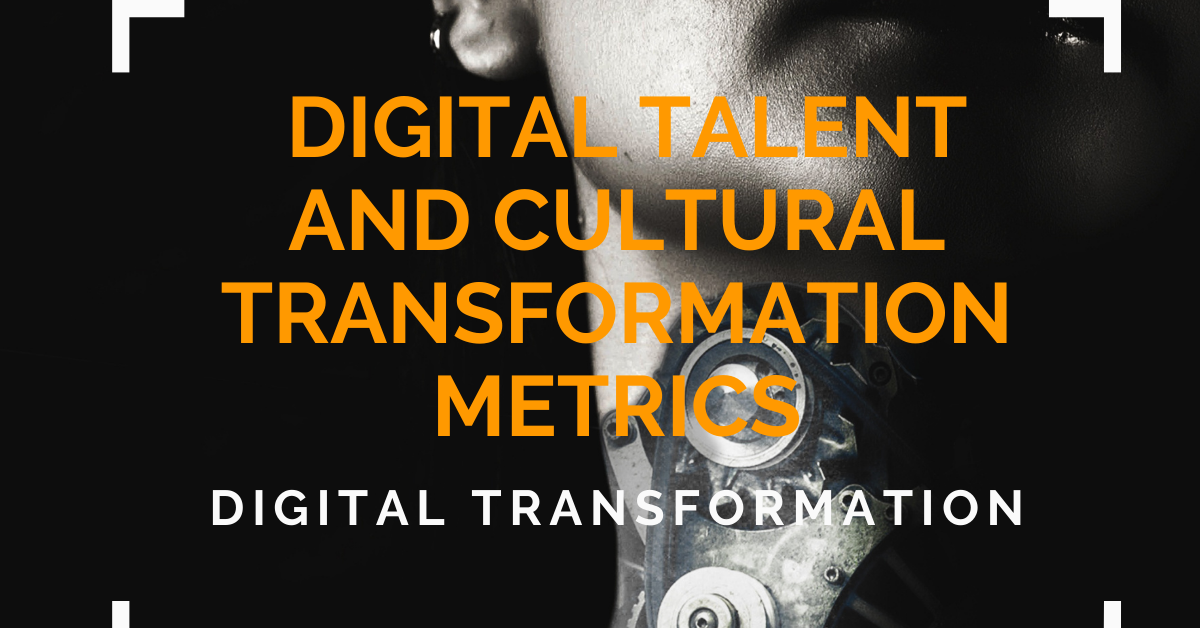An experts guide to the A-Z of all things Robotic Process Automation, Data Analytics, Intelligent Automation and Digital Transformation – the letter R
Welcome to the EIGHTEENTH part of a 26 part series detailing the A-Z of all things Robotic Process Automation (RPA), Data Analytics (DA), Intelligent Automation (IA) and Digital Transformation (DT). This article highlights all things relating to intelligent automation and digital transformation beginning with the letter ‘R’.
References: An automation program of reasonable enterprise scale may cost $250k in the first 6 months alone (e.g. software, consultancy, robotics lead, cloud architecture, process mapping software, coders, analysts, COE lead, licences, etc.). Therefore, selecting your Intelligent Automation platform and digital tooling should not be a quick decision. Organisations are advised to seek reference sites from vendors before purchasing a particular technology or set of technologies. They are further recommended to visit the vendors and speak to those who are working with, or impacted by, the technology in question to obtain a detailed view of the tooling.
- 40 essential criteria to select an intelligent automation platform
- Proof of Concept or Proof of Value – who cares just get going!
“Don’t just ask your vendor for a reference site as none are going to pick one which was a failure but look around to get a range of opinions from folks who are using the software in live environments.”
Paul Arnold, Head of Product and Development
Robot: Robotic Process Automation (RPA) can play a significant part in a business’ digital strategy. It is a tool that can unlock value that can set an organisation apart from its competitors. RPA is an exciting technology that is drawing increasing amounts of IT, analyst, consulting and business attention.
RPA uses ‘robots’ aka ‘bots’ or ‘digital workers’ to complete repetitive, digital, short cycle tasks that are normally completed by a person. A robot is a robot, right? Er, not quite! There are different types of automation solutions. RPA solutions tend to come in 3 different ice cream, or is that ‘I scream’, automation flavours (i.e. attended, unattended and hybrid automation).
- Attended automations run on a worker’s desktop and are invoked by the user via context-based screen triggers, an embedded screen button or hotkey combination, etc. An attended #RPA application ‘works’ alongside agents with humans and robots working together to run a process greatly reduce the time required to perform activities.
- Unattended bots are deployed remotely on a server away from workers desktops and ‘supposedly’ without the need for human intervention. Unattended automation is used to automate high-volume transaction-based back-office processes attempting to remove people from the process entirely.
- Attended and unattended #RPA can also be used together in a hybrid model. A task can start with an agent and be enabled by an attended automation, which can kick-off unattended RPA to complete a process.
- RPA 101: What is robotic process automation
“Boston Dynamics claim all the headlines with their physical back flipping Robot’s, but the software type is what is currently driving business efficiency in the Enterprise at least for now. The Robotic part of RPA is all about the ability to complete repetition of process, and it’s this aspect that drives efficiency, accuracy and auditability in your deployments.”
Wayne Butterfield, Automation Expert
Real Time (Data Analytics): While digital transformations can be difficult, the value of embracing data is clear i.e. data driven organisations enjoy increased revenue, improved customer service, operating efficiencies, and improved profitability. For organisations to be considered ‘data driven’, they must get real time data driven insights into the hands of the people who need it, if not before they need it (e.g. predictive and prescriptive analytics).
Information assets must be handled with care. Digital dexterous organisations must support data literacy amongst their teams. They need to bring data into every part of the decision making processes. Individuals must be taught when and how to use data assets, in order to improve decision making at every relevant opportunity. The closer the data is to ‘real time’ the better the decision making capability of the individual.
“Be careful of the amount of data in which can arrive, make sure the data lake and architecture is fit for purpose, and that a team or dashboard can utilise the data in the same business period, 24 hour old data is worthless unless it can be actioned on”.
Graham Lee, Automation Ninja and Feather Fancier
ROI: Whilst better quality data, reduced risk, higher employee and customer NPS all matter, it is the ringing of cash tills that is the only true sign of a healthy Robotic Process Automation (RPA) program. If your program is not making money, the kind that a CFO will validate, then it has failed.
“If savings are not being achieved in terms of monetary measurements, efficiencies, or a better customer experience, then what is the benefit of automation?”
Dermot Carroll – Technical Lead, Virtual-Operations
Several years ago it was estimated that 50% of Robotic Process Automation (RPA) programs failed. If we consider all the organisations that don’t make money from RPA, as reflected in figures hitting their P&L, then real world evidence suggests this figure may be a lot higher.
Different organisations may have different business strategies or priorities. For example, some organisations may want to use automation to reduce headcount or overtime bills. Other organisations may have a challenge retaining staff or customers. Currently, some organisations may need to retain their current output but at lower cost.
“ROI. That’s why most of the business exists, either directly or indirectly. For high ROI with RPA, the typical route is to find large and highly standardized processes with lots of manual work – the quick wins. Small complex processes eat ROI for breakfast. How to scale then? e.g. check if intelligent automation capabilities would lift the automation rate of current automation, use automated process discovery to find new quick wins, and introduce citizen developer or micro-app programs to automate the long-tail of small tasks and activities.”
Henri Wiik , Automated Business Analysis Company Owner”
Whilst different organisations have different goals, one thing remains true no matter what. Automation costs money. If firms are not able to realise real cash benefits in excess of cost from their RPA program then their programs have failed in financial terms.
“Combining your RPA implementations with a process mining tool helps guide decision-making about which processes to automate, based on actual data, with quantifiable process metrics, including cost, duration, and volume. Data can unlock insights below the surface that allow you to automate in the right place and ensure that you will get the anticipated ROI.”
Ema Roloff, Digital Transformation Navigator
Risks: Organisations, excited by automation and digitalisation, plan for success but neglect to plan for when things go wrong. Before beginning a project of any size consider what might go wrong during a programs execution. It is advisable to build a well ‘thought through’ plan that includes consideration for people, process and systems.
Once a plan is formulated, take time out to plays devils advocate and try tear the plan apart. Consider everything and anything that might go wrong. Think through each possible risk and have a plan of action to mitigate each risk in turn. As the project progresses, regularly revisit the risk register and keep it updated. If something does go wrong then the organisation will have a well ‘thought through’ ‘get out of jail’ plan, that can be used to navigate the choppy waters it finds itself in.
“Within the confines of an organisation, several risks will surface every now and then including People, Vision, Governance, Technology. Common RPA risks – “IT teams unaware of RPA deployment”, “failing to deliver projected business value”, “lack of vision”, “defunct process discovery approach resulting in pipeline bottleneck”, “inadequate process documentation”, “lack of business continuity in the event of a production disaster”, “inexistent service model”, “data/infrastructure security concerns”. Pre-empting these risks and establishing procedures to mitigate them is very crucial in any RPA deployment. Risks and mitigations should be an ongoing focus and priority of every organisation.
A popular quote from Alexander Graham – “Before anything else, preparation is the key to success”. You can’t have a workable, scalable deployment without preparation. Drop everything else and go back to the drawing board- What is the risk? Who is the risk owner? How can it be mitigated? What is our procedure? Who needs to take action? how can it be accessible to everyone?
As Jack Welch would say – “No vision is worth the paper it’s printed on unless it is communicated constantly and reinforced with rewards”. Everyone should be able to articulate the procedure. Effective communication and rehearsing the plan (“turn-off the lights”) regularly is key to achieving this.”
Tolani Jaiye-Tikolo, Hyper Automation and Intelligent Automation Consultant.
Relationship Management: Organisations should not introduce digital and automation technology platforms and then walk away once the program is up and running. Culture kills strategy. Therefore, organisations should curate enduring relationships with the teams who use or benefit from intelligent automation and digitisation.
“Culture will always be the issue when providing automation/ digitisation solutions, Culture eats Strategy for Breakfast Lunch and Tea.. This is the biggest indifference with in any organisation and the biggest battle to get involved with. Good luck.”
Graham Lee, Automation Ninja and Feather Fancier
By adopting a plan, do, check and act philosophy to any technology change, keeping key relationship partners engaged and informed throughout, organisations are more likely to see their digital transformation program to be embraced and possibly even celebrated.
“RPA is still more about the people than the technology.”
Balint Laszlo Papp
Organisations need to develop ‘cultural intelligence’ not just data or technological intelligence if they are to drive success transformation programs. Relationship management is a key part of their journey to ‘cultural intelligence’.
“Understanding of what transformation is and what it can deliver varies greatly. It is worth sharing an overview of your transformation plans with your vision and how it is intended to be used in your organisation, to educate and set expectations. Getting this right, engaging the organisation and delivering feedback will provide a solid foundation for relationship management.”
Mark Barrett, Automation Business Founder and Lead
Reusable Code: For the digital age organisations’ developers need to think in terms of building reusable ‘code Legos’. Legos should be built once and used many times over if organisations are to scale fast and derive a return from their automation and digital programs.
“The faster organisations implement a comprehensive reusability approach (i.e. components that are process-agnostic, stored/governed centrally and called across multiple processes), the more they will benefit from development quality and efficiency. Organisations can take action:
- Enforce components levels (e.g. application/process layers or a more extensive approach)
- Leverage good practice component frameworks to promote consistent, atomic development
- Build for reuse (naming conventions, generic selectors, no hard-coded values, correct exceptions etc.)
- Identify quick win components (high impact/pain reduction) across developments
- Implement a reusable component storage structure
- Drive reusable component governance through the Design Authority”
Lewis Walker, Intelligent Automation Architect
Digitally dexterous firms need to develop an agile mind-set and method that builds fast, reuses or throws away redundant code, and always press forward to meet customer needs. This demands a different way of working and thinking. If organisations continue to adopt a waterfall approach to code development and hand craft unique code every time the market or customer demands change, they will most likely fail in this digitally nimble age.
“Re-usability was initially one of the key gains of becoming more mature, and a reason to continue using a single vendor. When updating existing process objects (used across multiple processes), as well as re-using existing objects, such a logging in to x system in new processes, the build effort should reduce over time, as this library of objects grows, meaning less cost to automate moving forward.”
Wayne Butterfield, Automation Expert
Redesign Processes: Many organisations use intelligent automation, RPA and digital tooling to pursue ‘digital incrementalism’. However, an intelligent automation and digital transformation program is their single best opportunity to revisit and rethink old legacy processes. Intelligent automation, RPA and digital tooling should be seen as an opportunity to revisit how organisations work, and why.
“It is possible to automate existing processes, then use the time and money saved to release further value. However, organisations often gain more benefit from redesigning end to end processes for digital. The parts of the process that no longer adds value can be removed, the process itself can be reordered to enable greater levels of automation and by taking an end to end process view firms often find that they can release a lot more value than taking a piecemeal approach.”
Gourav Datta, Intelligent Automation Delivery Lead
Organisations digital transformation initiatives should be directed to reimagine an organisations entire value chain, from how it serves its customers, to how it produces value from front, middle and back-office processes. The most successful organisations of the future will be those that leverage data, digital tooling, intelligent automation and their human talent pool to blow apart industry boundaries and creatively meet customer needs.
“I have been working with Lean tools for many years, but they can be challenging to apply to administrative processes. RPA is actually a very efficient tool to find process improvements. When using the RPA perspective, you are forced to look at many different aspects of the process and you will find improvements you would not have found with other tools.”
Anna Lagerhed, RPA Lead
Road-map (vendor). Automation is long term journey. Consequently, organisations should aim to bind themselves to a vendor that has a solid, well ‘thought through’ technology roadmap. The automation and digital platform roadmap needs to align with an organisations strategy. Make sure the vendor’s journey is aligned with the organisations journey.
“While roadmaps can and do evolve, strategic milestones should be clearly defined – the best RPA companies have a roadmap that shares a compelling vision and tells an ambitious story. Find the company that thinks big and then gets the big things done.”
John Grancarich, Vice President Of Product Strategy
RDA: this is where the task execution becomes asynchronous…NOT the engine but only the task processing. Bots run in their dedicated virtual desktops. Humans can still perform other activities via their physical desktops (“brittle” parallel processing).
- Advanced RDA: this is where RDA moves to a respectable level. With an asynchronous engine, humans and bots work together via the same physical desktops. Bots interact with the UI straight from the Kernel-based engine without the need to reserve the UI or run via virtual desktops. This enables ‘robust’ parallel processing. Desktop agents continuously gather user behaviours to identify new automation opportunities.
- Optimised RDA: Pretty much the same as “Advanced” with a few additional capabilities. RDA proposes or makes adaptive decisions, using information obtained from the workforce activities. There is also an option to run some bots via virtual desktops for additional workload increase or balancing.
“RDA is where the task execution becomes asynchronous…NOT the engine but only the task processing. Bots run in their dedicated virtual desktops. Humans can still perform other activities via their physical desktops (“brittle” parallel processing). Step away from the screen, I see you, you’ll get square eyes I’m telling ya. Why do you think all IT people have rectangular glasses. If I told you that your desktop can complete some of the mundane tasks that you have to do on a daily basis will I be your new best friend? Cause it’d save you a lot of time. RDA does just that it helps simplify and automate business processes and transactions on your desktop. Say no more to can you repeat that again for me, just one more time, and again please. It reduces customer experience and wastes YOUR time. That’s why RDA is a god send.”
Jessica Levett, Scrum Master and Architect
This article highlighted some things relating to intelligent automation and digital transformation beginning with the letter “R”. There are many ‘R’s’ organisations need to consider but what ‘R’ do you think is the most important?
#intelligentautomation #bots #rpaworks #digitaltransformation#roboticprocessautomation #rpa #cognitiveautomation #digitaldisruption#digitalworkforce #processautomation #digitalfuture #digitalstrategy
Other articles: If you like this article then you may find these articles of use also.
- How to build a business case for Intelligent Automation and Robotic Process Automation
- 30 ways to build a pipeline of processes suitable for Robotic Process Automation (RPA) and Intelligent Automation (IA)
- The biggest lie told to RPA customers – 50 robots equals success
- 40 essential selection criteria to choose an RPA platform
If this could benefit someone else tag them and share this.
Free to reuse: We are a community of RPA, digital analytics, digital transformation and Intelligent Automation experts with years of real world experience. We have stories to tell and the scars to show for it. We share our collective wisdom for free to simply provide as much value as we can to you. Therefore, if you want to post this article on your LinkedIn page then please feel free to do so. The more information we share within the RPA community the more likely businesses are to succeed with this excellent technology.
Further Help: If I can help you in any way please do reach out.
Note: The views expressed above are our views and not those of my employer or the employers of the contributing experts.








Leave a Reply